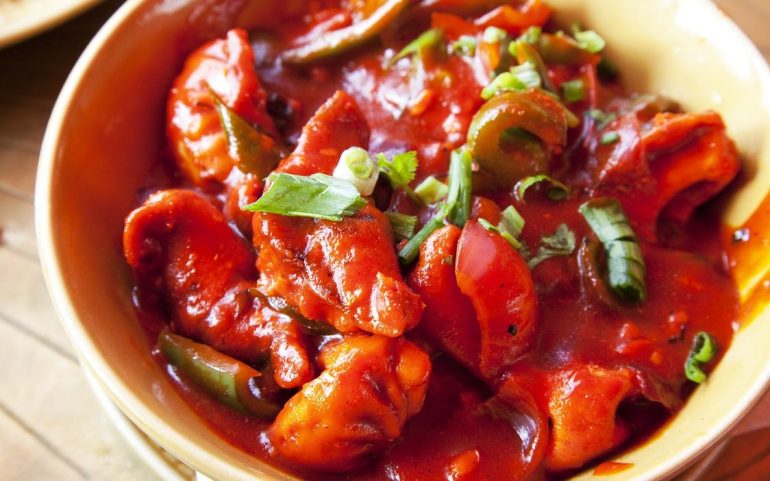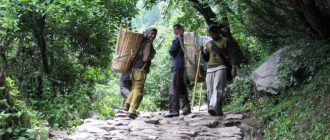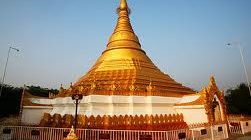Nepalese food is heavily influenced by Indian and Tibetan cuisine and consequently you should come across a wide variety of food during your stay. International foods from across the globe are particularly represented in restaurants in Kathmandu.
Although traditional Nepalese food is often described as ‘bland’, Nepalese cuisine is certainly healthy and extremely nourishing.
The most popular Nepalese food includes a dish called dhal bharkt taari. Dhal bhat tarkari consists of rice (bhat), curried vegetables (tarkari) and a type of lentil soup know as dhal. Bhat is certainly a staple Nepalese food. However in areas where rice is scare (primarily in poor and high-altitude areas) the staple food is usually dhiro, a thick mush which is produced from corn or millet.
Popular Foods in Nepal
- Curd – A type of yoghurt;
- Gundruk – A sun-dried leafy green vegetable which is cooked in different ways (particularly in soup);
- Thupka – A traditional chicken soup;
- Masu – Meat with a type of spicy gravy and rice;
- Alu Tama – Potato made with bamboo shoots.
Sweet Nepalese Foods
- Skiarni – A spiced sweet pistachio desert;
- Juju Dhau – A rich creamy curd.
Popular Nepalese drinks include locally produced beer and lassi which is refreshing drink made from yoghurt and water.
Nepalese Food Customs
There are customs relating to food and drink in Nepal which you should adhere to. The key things to be aware of are that non-hindus are not welcome in the Nepalese kitchen under any circumstances. You should also be careful not to touch anybody else’s food whilst in Nepal as this is considered the height of bad manners.
When eating your food, you should be careful to ensure that you use your right hand at all times as the left hand in Nepal is primarily used for cleaning oneself after using the toilet. Equally you should never pass food to anyone with your left hand whilst in Nepal. Cows are considered holy in Nepal and therefore any food containing beef is strictly prohibited.
You may also notice that there are caste etiquettes relating to the eating of food whilst you are in Nepal. A high-caste Brahman can not eat food which has been prepared by somebody from a lower caste. In effect, this means that a high-caste Brahman is unable to eat his / her food in a restaurant as they cannot be sure who is doing the cooking in the kitchen.





